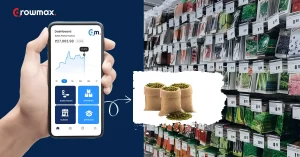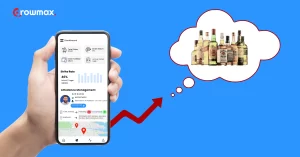How many salespeople are needed to get orders for a single product? How many to cover a hundred locations? Let’s say a hundred.
For ten products? Answer is… The Same Hundred Salespeople.
A salesperson can market many products without losing his efficiency. Big players use this capacity to reduce their average sales costs and make big profits.
Paying a hundred reps to cover a hundred locations — for a single product — is sheer underuse of reps. It is like buying a hundred Vans and filling each with a single item to transport.
Big players know this and therefore deal in multiple products.
SMEs and Startups, however, do not have ten or more products to market. They are forced to hire 100 salespersons to cover their geographical markets.
Result? They have to pay the salaries of hundreds of sales reps to get a small fraction of the profits on their product.
But what if there was a way to use this leverage? To pay only for the productivity they get, and not for the unutilized time and efforts of the sales reps?
There is a way…It is called Virtual Salesforce.
What is Virtual Sales force?
A Virtual Sales force is a team of sales reps with an established network of retailers. They collect products from several companies and market them to their desired locations.
These salesmen do not belong to the company. Instead, they work as freelance employees.
Unlike the actual Salesforce, a company doesn’t need to manage them under its hood. And it doesn’t need to give salary to every salesperson.
It creates a win-win situation for both parties. Both the manufacturer and the distributor gain on this deal.
How does it benefit the Manufacturer?
1)Massive Cost Savings
With Virtual Salesforce, Manufacturers don’t need to hire an entire fleet of salespeople. They could get the job done without signing a hundred paychecks.
Using Virtual Sales force helps a company cut massively on its sales costs and increase its profits.
2)Fast Market coverage
Establishing a retail network across the market is difficult and time-consuming for SMBs. Companies may take years to establish such networks and cover the entire market.
But, the salespeople in the Virtual Sales force already have a firm grip over the market.
New companies can cover the entire market without spending mountains of money. Additionally, they don’t need to wait for years of gradual progress.
All they need to do is to hire a virtual sales force. The salespeople already have an established network of retailers and wholesalers. They are present everywhere, and companies can use them for fast market coverage.
3)Retail Relationship
When they enter the market, new Salesforce has an important task. They need to build trust among the retailers. This process may take years for the newcomers.
Virtual Salesforce, however, does not face this challenge. Because of their long presence in the market, they already have good relations and trust with the retailers and wholesalers.
How does it benefit the Distributor and Salespeople?
1) Monetary Incentive
The distributor organizes, guides, and manages the Salesforce and, in return, takes his cut from the pooled money. The salespeople, in addition, get their full salaries.
This monetary incentive motivates the distributor and his salespeople to do their jobs.
2) Sustained Presence
Having a steady flow of goods to supply helps the distributor to maintain his grip on the market. The salespersons, similarly, get sustained employment and market presence.
Virtual Sales force Model in Theory
Let’s assume there are 5 companies. And they want to market their products across 100 locations.
To do this, they need 100 sales reps each. And every salesperson demands a salary of 30000 rupees.
Scenario 1:
If the companies decide to hire their own Salesforce, they’ll have to pay 100* 30000*5 =1.5 crores.
Or 30 lakh rupees per company.
However, if they go to a distributor and opt for a Virtual Sales force, things will change.
Scenario 2:
If a fleet of 100 salespeople take the products of the 5 companies and distribute them together, then…
The total cost will come down to 100 * 30000 = 30 lakhs.
Assuming that the distributor charges 30 lakhs:
The total cost would reach 100*30,000+3,00,000= 33 lakhs.
Or 6.6 lakhs per company. That’s a straight 78% reduction in sales cost.
This is how Virtual Salesforce helps new companies. It allows startups to capture the markets that could have taken 1000 salespersons at the cost of 200 or fewer salespersons.
It is an innovative way for companies to distribute their products and save on their sales costs.
Did this article help? Check out more articles like this. Here’s one on Inventory Management Systems.




